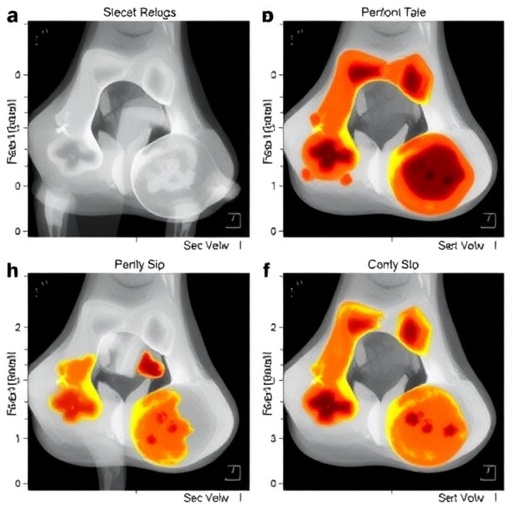The rising prevalence of dental erosion and dentin hypersensitivity has led to the emergence of more and more toothpastes on the market that claim to treat these problems. While no such toothpaste existed 20 years ago, today, many brands with different attributes are being offered.
However, a study conducted at the University of Bern in Switzerland with the participation of a researcher supported by a scholarship from the São Paulo Research Foundation – FAPESP showed that none of the nine analyzed toothpastes was capable of mitigating enamel surface loss, a key factor in tooth erosion and dentin hypersensitivity.
"Research has shown that dentin must be exposed with open tubules in order for there to be hypersensitivity, and erosion is one of the causes of dentin exposure. This is why, in our study, we analyzed toothpastes that claim to be anti-erosive and/or desensitizing," said Samira Helena João-Souza, a PhD scholar at the University of São Paulo's School of Dentistry (FO-USP) in Brazil and first author of the article.
According to an article published in Scientific Reports, all of the tested toothpastes caused different amounts of enamel surface loss, and none of the toothpastes afforded protection against enamel erosion and abrasion.
The authors of the study stressed that these toothpastes perform a function but that they should be used as a complement, not as a treatment, strictly speaking. According to João-Souza, at least three factors are required: treatment prescribed by a dentist, use of an appropriate toothpaste, and a change in lifestyle, especially diet.
"Dental erosion is multifactorial. It has to do with brushing, and above all, with diet. Food and drink are increasingly acidic as a result of industrial processing", she said.
The researcher highlights that dental erosion is a chronic loss of dental hard tissue caused by acid without bacterial involvement – unlike caries, which is bacteria-related. When it is associated with mechanical action, such as brushing, it results in erosive wear. In these situations, patients typically experience discomfort when they drink or eat something cold, hot or sweet.
"They come to the clinic with the complaint that they have caries, but actually, the problem is caused by dentin exposure due to improper brushing with [a] very abrasive toothpaste, for example, combined with frequent consumption of large amounts of acidic foods and beverages," said Professor Ana Cecília Corrêa Aranha, João-Souza's supervisor and a co-author of the article.
In our clinical work, we see patients with this problem in the cervical region between [the] gum and tooth. The enamel in this region is thinner and more susceptible to the problem," she added.
Methodology
The scientists tested eight anti-erosive and/or desensitizing toothpastes and one control toothpaste, all of which are available from pharmacies and drugstores in Brazil or Europe.
The research simulated the effect of brushing once a day with exposure to an acid solution for five consecutive days on tooth enamel. The study used human premolars donated for scientific research purposes, artificial saliva, and an automatic brushing machine.
"We used a microhardness test to calculate enamel loss due to brushing with the toothpastes tested. The chemical analysis consisted of measuring toothpaste pH and levels of tin, calcium, phosphate and fluoride," João-Souza explained.
The physical analysis consisted of weighing the abrasive particles contained in the toothpastes, measuring their size, and testing wettability – the ease with which toothpaste mixed with artificial saliva could be spread on the tooth surface.
"During brushing with these toothpastes mixed with artificial saliva, we found that the properties of the toothpastes were different, so we decided to broaden the scope of the analysis to include chemical and physical factors. This [broadening] made the study more comprehensive," João-Souza said.
Statistically similar
All of the analyzed toothpastes caused progressive tooth surface loss in the five-day period. "None of them was better than the others. Indication will depend on each case. The test showed that some [toothpastes] caused less surface loss than others, but they all resembled the control toothpaste [for] this criterion. Statistically, they were all similar, although numerically, there were differences," Aranha said.
"We're now working on other studies relating to dentin in order to think about possibilities, given that none of these toothpastes was found capable of preventing dental erosion or dentin hypersensitivity, which is a cause of concern."
The researchers plan to begin a more specific in vivo study that will also include pain evaluations.
###
About São Paulo Research Foundation (FAPESP)
The São Paulo Research Foundation (FAPESP) is a public institution with the mission of supporting scientific research in all fields of knowledge by awarding scholarships, fellowships and grants to investigators linked with higher education and research institutions in the State of São Paulo, Brazil. FAPESP is aware that the very best research can only be done by working with the best researchers internationally. Therefore, it has established partnerships with funding agencies, higher education, private companies, and research organizations in other countries known for the quality of their research and has been encouraging scientists funded by its grants to further develop their international collaboration. For more information: http://www.fapesp.br/en.
Media Contact
Joao Carlos da Silva
[email protected]
55-113-838-4381
@AgencyFAPESP
http://www.fapesp.br
http://agencia.fapesp.br/27327
Related Journal Article
http://dx.doi.org/10.1038/s41598-017-18154-8




